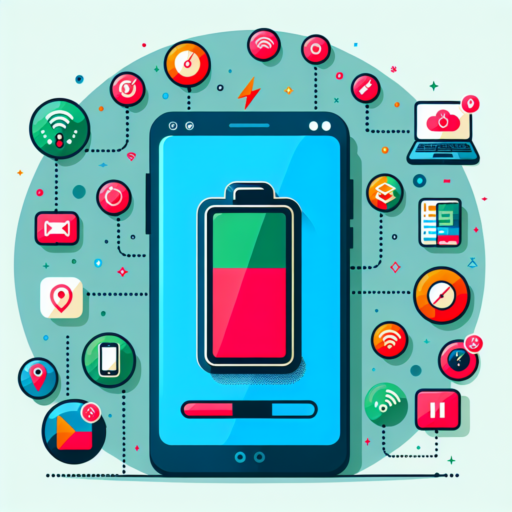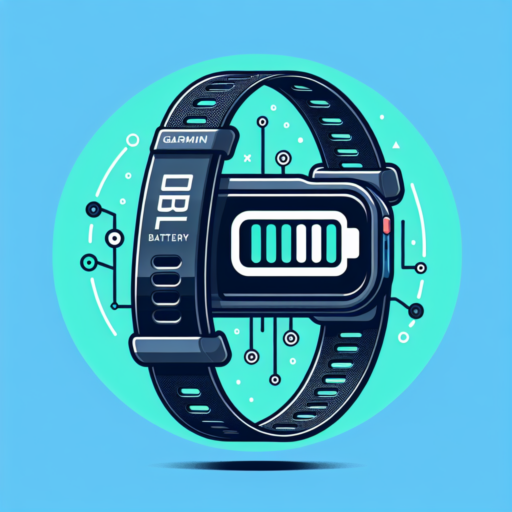No se han encontrado productos.
Understanding the Basics: Why Your Phone Battery Drains Quickly
Many smartphone users often find themselves puzzled and frustrated over how quickly their phone battery seems to deplete. While it’s easy to chalk it up to aging technology or assume it’s an unavoidable consequence of daily use, a deeper understanding of the factors at play can shed light on this common issue. Knowing why your phone battery drains quickly not only empowers you with knowledge but also offers insights into how you might mitigate the problem.
High Screen Brightness and Extended Screen Time
One of the primary culprits behind a rapidly draining phone battery is high screen brightness. Brighter screens require more power, significantly shortening the battery life. Additionally, extended periods of screen time, especially while using power-intensive applications like games or video streaming services, can exhaust your battery much faster than you might expect. Moderating screen brightness and limiting screen-on time can help conserve battery life substantially.
Background Applications and Services
It’s not just the visible activities that sap your phone’s battery; background applications and services play a significant role too. Many apps continue to run in the background, refreshing content and pushing notifications, even when you’re not actively using them. This constant operation not only consumes data but also drains the battery. Regularly reviewing which apps are running in the background and disabling unnecessary background refreshes can make a noticeable difference.
Common Culprits: Apps That Drain Your Phone Battery
Identifying the apps that drain your phone battery is crucial for enhancing your device’s longevity and performance. Despite the evolution of smartphone technology, battery life remains a pivotal challenge for many users. Certain applications, due to their functionality and design, are known to consume a significant amount of power, even when not in use actively.
Social Media Apps: The Hidden Energy Consumers
Social media applications like Facebook, Instagram, and Snapchat are among the top contributors to battery depletion. These platforms are designed to keep users engaged for extended periods, which in turn, results in higher battery consumption. Features such as auto-playing videos, frequent notifications, and location-based services continuously run in the background, draining battery life more rapidly than expected.
Online Streaming Services: Entertainment at a Cost
Online streaming apps such as YouTube, Netflix, and Spotify also significantly impact your phone’s battery life. High-quality video streaming and music playback are resource-intensive activities that lead to quicker battery drain. Moreover, if these apps are left running in the background, they continue to consume power even when you’re not actively using them.
Understanding which apps are responsible for draining your phone’s battery can help you manage your device’s energy consumption better. By adjusting your usage patterns and settings for these high-consumption apps, you can improve your smartphone’s battery life and overall performance.
Screen Brightness and Display Settings: How They Affect Your Battery Life
Adjusting the screen brightness and tweaking your display settings can significantly impact your device’s battery life. When your screen is brighter than necessary, it consumes a considerable amount of power, leading to faster battery drain. Conversely, optimizing these settings for your environment can help conserve energy and extend your device’s usability throughout the day.
Optimizing Screen Brightness for Better Battery Performance
Most modern devices come equipped with an auto-brightness feature, which automatically adjusts the screen brightness based on the ambient light. This can be a convenient way to ensure your screen is not brighter than it needs to be, saving precious battery life. However, manual adjustment can sometimes be more effective, especially in situations where the automatic settings do not align perfectly with your personal preference or the specific lighting conditions.
Impact of Display Settings on Power Consumption
Beyond brightness, other display settings like screen timeout duration and dynamic wallpapers also influence battery life. Setting your screen to dim or turn off after a short period of inactivity can drastically reduce power consumption. Similarly, static wallpapers are generally more energy-efficient than their animated counterparts. By understanding and adjusting these settings, users can significantly enhance their device’s battery performance.
Background Processes: What’s Happening Behind the Scenes?
Understanding background processes on your computer can provide insights into why a machine may behave in certain ways, from slowing down to performing tasks automatically without explicit instructions. These processes run behind the scenes, often invisible to the user, yet they are crucial for the efficient operation of your device. They include a wide range of tasks, from system updates to applications checking for new content in the background.
At the core of these hidden operations are the essentials that maintain system integrity and user convenience. For instance, antivirus scans that occur without interrupting your work or scheduled backups that ensure data is safely stored without any action on your part. Moreover, background processes are integral in managing system resources, allocating memory and processing power where it’s needed most, often without any input from the user.
However, not all background activities contribute positively to system performance. Some can lead to decreased performance, especially if too many processes compete for limited resources. Identifying and managing these can significantly improve the responsiveness and efficiency of a machine. Tools built into operating systems, like Task Manager in Windows or Activity Monitor in macOS, allow users to glimpse into this usually unseen world, offering the option to end tasks that are unnecessarily eating into system resources.
Location Services and Connectivity: GPS, Wi-Fi, and Bluetooth Drain
In today’s interconnected world, location services and connectivity options like GPS, Wi-Fi, and Bluetooth are indispensable for the functionality of our smart devices. However, it’s no secret that these features can significantly impact the battery life of our gadgets. The balance between staying connected and preserving battery life is a challenge faced by users daily.
GPS (Global Positioning System) is notorious for its high energy consumption. It provides precise location tracking by connecting to a network of satellites, which, while beneficial for navigation and location-based services, can deplete battery resources at an accelerated rate. Users often notice a swift decline in battery percentage when using apps that require constant GPS connectivity, such as map and navigation applications.
Similarly, Wi-Fi and Bluetooth technologies, while less demanding than GPS, still contribute to battery drain. Continuous Wi-Fi scanning and background app updates can surreptitiously consume power, even when a device seems idle. Bluetooth connections, especially when maintaining connections with multiple devices simultaneously, like wireless headphones, smartwatches, or vehicle systems, further strain the battery. This cumulative effect of location services and connectivity functions necessitates a more strategic management of these features to mitigate energy consumption.
Outdated Software: How It Impacts Your Phone’s Battery Life
Having your phone’s software up to date is crucial for several reasons, with battery life being one of the key aspects directly affected. Outdated software can significantly drain your phone’s battery, causing more frequent charges and reducing the overall lifespan of your device. This can result from older versions of operating systems not being optimized to efficiently manage battery resources in the way newer updates often are.
Moreover, developers constantly work to improve their apps’ energy efficiency, with updates frequently including optimizations that reduce battery consumption. When users delay these updates, they miss out on essential improvements. This lack of optimization from outdated software forces your phone to work harder, using more battery to perform the same tasks compared to an updated device. Consequently, this excess workload can lead to overheating issues, further impacting battery health and performance.
Another perspective to consider is compatibility. As software becomes outdated, compatibility with new apps or features can become an issue. Developers typically design their applications to run most efficiently on the latest operating systems. When using outdated software, your phone may struggle to keep these apps running smoothly, leading to increased processor usage and, consequently, more battery power usage. This additional strain not only affects your phone’s immediate battery life but can also contribute to the quicker degradation of the battery’s overall health.
Extreme Temperatures: The Effect on Battery Performance
The impact of extreme temperatures on battery performance is a prevalent concern among various device users and manufacturers. Whether it’s the sweltering heat of summer or the biting cold of winter, both extremes can have profound effects on the operational efficacy of batteries.
In the face of high temperatures, batteries tend to undergo accelerated chemical reactions. This not only leads to a quicker drain of the battery’s stored charge but can also result in the degradation of its overall lifespan. Devices left in hot environments, such as a car during a sunny day, may experience diminished battery performance and, in severe cases, permanent damage.
How Cold Weather Affects Battery Performance
Conversely, cold temperatures can have an equally detrimental effect on batteries, albeit through different mechanisms. When the mercury drops, batteries suffer from reduced chemical activity, leading to a decrease in the energy they can deliver. This phenomenon is most noticeable in automotive batteries, where cold weather can result in a car struggling to start. However, this impact is not limited to vehicles; portable electronics can also experience decreased battery efficiency in colder climates, affecting device usability.
Hardware Issues: When It’s Not Just About Your Usage Habits
Often, when our devices start malfunctioning, the first instinct is to question our usage habits. However, hardware failures can occur independently from how meticulously or sparingly we use our gadgets. This isn’t just about pressing keys too hard or dropping your device; it’s about understanding that hardware is inherently prone to wear and tear, and some issues are inevitable over time.
Common Signs of Hardware Failure
Detecting hardware issues early can save you from unexpected breakdowns. Signs like overheating, strange noises, or frequent crashes are red flags not to be ignored. These symptoms suggest that there’s a deeper issue at play, one that simple software tweaks or changing your usage patterns won’t fix. It indicates that parts of your device, be it the hard drive, fan, or battery, are nearing the end of their lifespan and require professional attention.
Preventive Measures and Maintenance
While some hardware failures are inevitable, regular maintenance and care can significantly extend the lifespan of your device. This includes keeping your device clean, ensuring proper ventilation, and getting regular hardware checks, especially if you notice any early signs of wear and tear. Understand that preventive measures won’t make your device immortal but can certainly help mitigate the risk of sudden hardware failures that disrupt your digital life.
Solutions and Fixes: Tips to Extend Your Phone’s Battery Life
In today’s fast-paced world, a smartphone is not just a device; it’s an essential companion that keeps us connected wherever we go. However, the challenge of keeping our devices powered throughout a busy day can be daunting. The good news is, with a few simple adjustments and mindful practices, you can significantly extend your phone’s battery life and ensure it serves you well, from dawn till dusk.
Adjust Your Screen Settings
One of the biggest consumers of your phone’s battery is the display. By making a few adjustments to your screen settings, you can see a noticeable difference in battery longevity. Start by reducing the screen brightness or enabling adaptive brightness, which automatically adjusts the display based on the lighting conditions. Additionally, setting a shorter screen timeout can prevent your phone from wasting power when you’re not actively using it. Incorporating these changes can not just save battery life but also reduce eye strain.
Optimize App Usage
Apps can be insatiable when it comes to consuming power, particularly those that run in the background. Take the time to review which apps are essential and which ones you can close or even uninstall. Use the built-in battery optimization features within your device to identify and put to sleep power-hungry apps that you don’t use frequently. Turning off app notifications for non-essential apps can also greatly reduce battery drain, as each notification lights up the screen and adds to the power usage.
Embrace Power-Saving Modes
Most smartphones come equipped with one or more power-saving modes that can dramatically extend battery life when you’re running low. These modes typically limit background data usage, reduce display brightness, and disable automatic syncing. While these changes might affect how you use your device, activating a power-saving mode when your battery dips below a certain percentage ensures you remain connected for as long as possible. Familiarizing yourself with these settings and using them proactively can make a significant difference in how often you need to charge your phone.
Battery Replacement and Repair: When to Consider It
Understanding when to opt for battery replacement and repair is crucial for maintaining the efficiency and longevity of your devices. Batteries, being the lifeline of our gadgets, demand timely attention to their health. Whether it’s your car, smartphone, or laptop, the right moment for battery care can significantly differ based on several factors.
Signs your battery needs attention include unusual power drains, longer charging times, and in some severe cases, swelling of the battery itself. These signs indicate that the battery is not functioning at its optimal level and requires immediate inspection. Ignoring these warning signs can lead to further damage not only to the battery but also to the device itself.
Factors Impacting Battery Health
- Charging habits: Frequent overcharging or consistently draining the battery to zero can harm its lifespan.
- Temperature exposures: Extreme heat or cold can severely impact a battery’s efficiency and durability.
- Age of the battery: Over time, batteries degrade naturally, holding less charge and diminishing in performance.
Regularly monitoring battery performance and knowing when to seek battery replacement and repair services can save you from the inconvenience of sudden device failures. Acknowledging the pivotal role of a healthy battery in the seamless operation of our daily gadgets will ensure their reliability and longevity.



